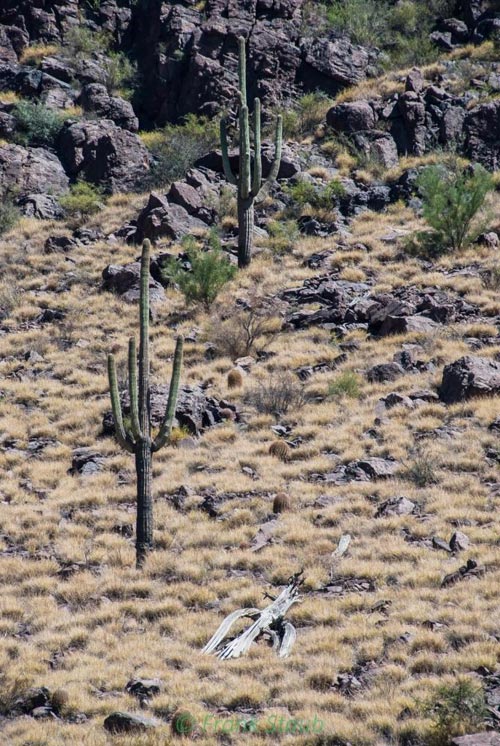Studies show integrated strategies work best for buffelgrass control

Farrell and Gomish IPSM Volume 12 issue 4 Credit: WSSA
To shed new light on buffelgrass and the best techniques to use for its control, researchers from the University of Arizona conducted a literature review that is featured in vol. 12 issue 4 of the journal Invasive Plant Science and Management.
The authors synthesized the results from 229 studies conducted on several continents and in a variety of ecosystems. Among their findings:
- The most effective buffelgrass control is achieved when multiple techniques are used in tandem and when follow-up treatments are applied. For example, fire might be used to destroy adult plants, followed by herbicide applications or the manual removal of new seedlings.
- Buffelgrass takes advantage of environmental conditions to compete against native species. For example, it can access water deeper in the soil profile for longer into the dry season and can take advantage of nutrients and space made available after wildfires or other disturbances. As a result, land managers may want to focus on restoration of drought-tolerant native species that can compete effectively under the same conditions.
- The long-term impact of buffelgrass treatments on native plants and ecosystems is poorly understood. The authors suggest the need for additional research to explore the issue.
“Our review highlights the value of integrated weed management programs,” says Hannah Farrell, PhD student and lead author. “Herbicides or other treatments used in isolation are uniformly less effective in controlling buffelgrass than those used in tandem with other approaches.”
The article “Pennisetum ciliare: a review of treatment efficacy, competitive traits, and restoration opportunities,” is available at http://www.
About Invasive Plant Science and Management
Invasive Plant Science and Management is a journal of the Weed Science Society of America, a nonprofit scientific society focused on weeds and their impact on the environment. The publication focuses on invasive plant species. To learn more, visit http://www.
Media Contact
All latest news from the category: Agricultural and Forestry Science
Newest articles

First-of-its-kind study uses remote sensing to monitor plastic debris in rivers and lakes
Remote sensing creates a cost-effective solution to monitoring plastic pollution. A first-of-its-kind study from researchers at the University of Minnesota Twin Cities shows how remote sensing can help monitor and…

Laser-based artificial neuron mimics nerve cell functions at lightning speed
With a processing speed a billion times faster than nature, chip-based laser neuron could help advance AI tasks such as pattern recognition and sequence prediction. Researchers have developed a laser-based…

Optimising the processing of plastic waste
Just one look in the yellow bin reveals a colourful jumble of different types of plastic. However, the purer and more uniform plastic waste is, the easier it is to…



